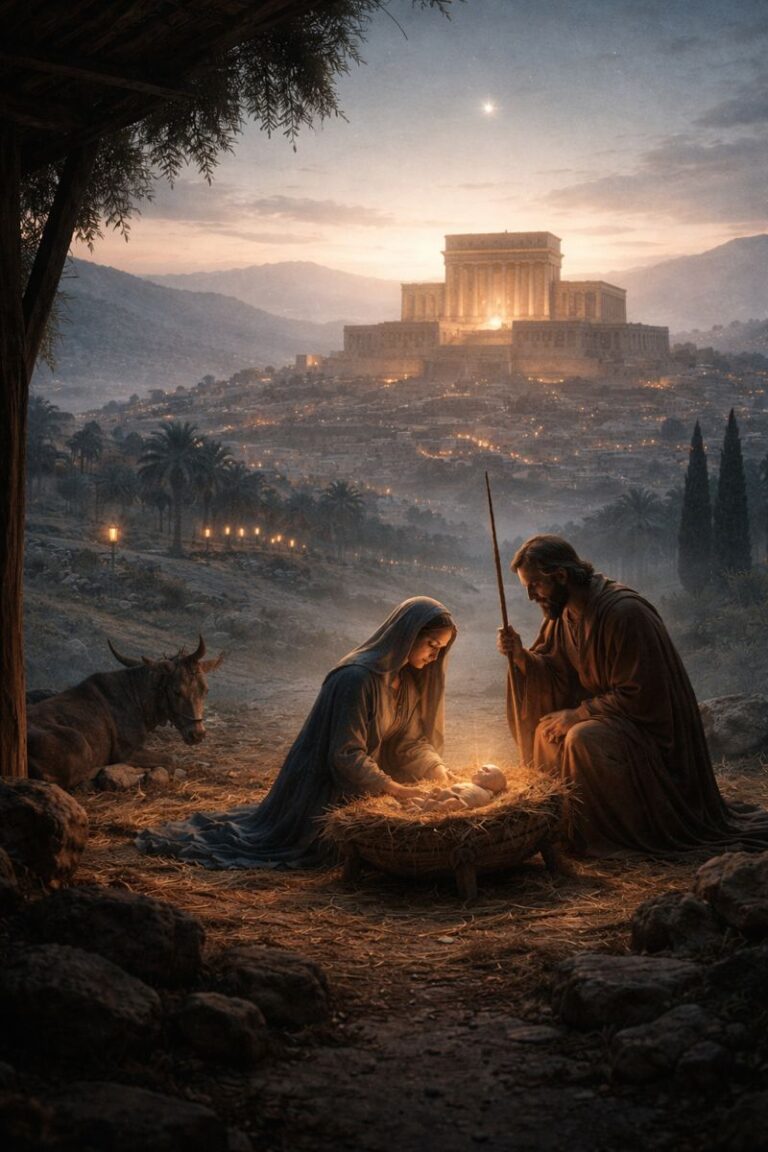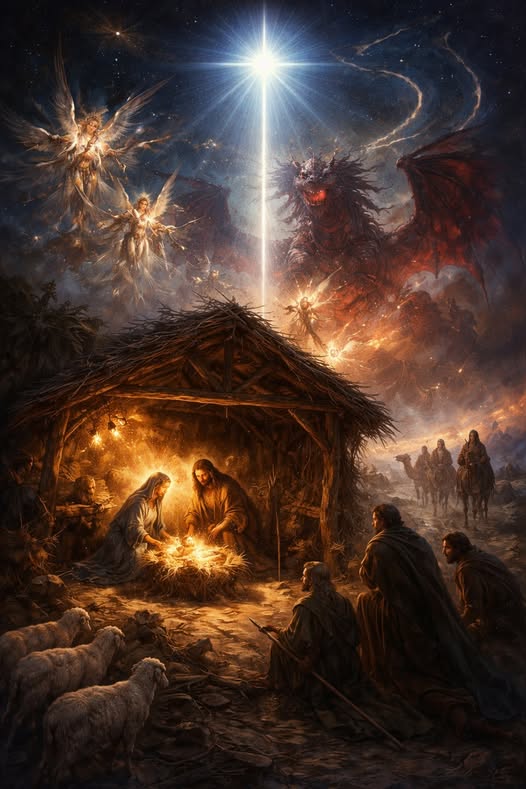
John 14:1–3 is one of the most comforting passages in the New Testament. Jesus tells His disciples:
“Let not your hearts be troubled. Believe in God; believe also in me. In my Father’s house are many rooms… I go to prepare a place for you… I will come again and take you to myself, that where I am you may be also.”
Some modern interpreters claim that Jesus is referencing Jewish wedding customs, suggesting He is the Bridegroom going to prepare a home for His Bride, the Church. This idea has become popular, particularly in some evangelical and prophetic circles. However, when tested against the text and historical background, the analogy does not hold up.
No Wedding Language in the Passage
John 14 contains no mention of a bride, bridegroom, wedding, or marriage. The key imagery is centered around a father’s house and dwelling places, not a bridal procession or wedding feast. To apply a wedding context here requires inserting ideas not found in the passage itself.
Lack of a Uniform First-Century Wedding Pattern
There is no evidence of a standardized Jewish wedding ritual in the first century that matches the one used in modern presentations. The commonly taught model, where the groom is betrothed, goes away to build a room onto his father’s house, and later returns unexpectedly, is derived from later rabbinic writings and modern reconstructions. These sources post-date the New Testament and are not representative of wedding practices during the time of Jesus.
Context Is Pastoral, Not Romantic
Jesus is comforting His disciples in anticipation of His death and departure. The message is not about marriage but about assurance. He is promising that His leaving is purposeful and that reunion is guaranteed. The emphasis is on continued relationship, not ceremonial imagery.
“Father’s House” Refers to the New Jerusalem
Earlier in John 2:16, Jesus refers to the Temple as His Father’s house. That theme expands throughout the Gospel. In Revelation 21, this idea reaches its fulfillment in the New Jerusalem, where God permanently dwells with His people. Revelation 21:22 says, “I saw no temple in the city, for its temple is the Lord God the Almighty and the Lamb.” The New Jerusalem is the Father’s house, no longer a building, but the entire renewed creation where God’s presence fills all.
“Many Rooms” Are Abiding Places in God’s Presence
The word translated “rooms” is monai in Greek, meaning dwelling places or places to abide. This is not bridal language. It refers to permanent inclusion and communion. In Revelation 21, the New Jerusalem is described as a perfect cube, echoing the dimensions of the Holy of Holies. The whole city is sacred space. The “many rooms” are not private chambers but places for the redeemed to dwell within the life and presence of God.
Bridegroom Language Is Found Elsewhere, But Not Here
Jesus does refer to Himself as a bridegroom in other passages, such as John 3:29 and Matthew 9:15. Paul develops the Church-as-Bride theme in Ephesians 5, and Revelation presents the marriage of the Lamb in chapter 19. However, John 14 uses none of that language. The absence is significant. If Jesus were invoking a bridal metaphor, it would appear in the language and structure of the passage. It does not.
“I Will Come Again” Is Theologically Broad, Not Symbolic of a Wedding
When Jesus says He will “come again and take you to myself,” the meaning may encompass several phases—His post-resurrection appearances, the sending of the Holy Spirit, or His Second Coming. What is clear is that His return brings believers into communion with Him and the Father in the dwelling He has prepared. That dwelling is not a wedding chamber but the New Creation itself.
The Disciples Do Not React as if He Is Talking About a Wedding
Thomas responds by asking where Jesus is going and how they can follow Him. His confusion is about direction and access, not about a marriage or betrothal. If Jesus were using familiar wedding language, the disciples would have recognized it. Their response confirms that no such framework is present.
Forcing the Analogy Distracts from the Real Message
Imposing a wedding framework onto John 14 distracts from what Jesus is actually saying. The promise is not about an eschatological wedding ceremony but about restored access to God’s presence. Jesus is assuring His followers that they will dwell with Him and the Father forever in the space He is preparing—the eternal, radiant city of God.
Conclusion
John 14:1–3 is not a cryptic reference to a Jewish wedding, but a clear promise of eternal communion. The “Father’s house” is the New Jerusalem, the final dwelling place of God and His people. The “many rooms” are abiding places prepared through the work of Christ, and the return He promises is the fulfillment of the hope that God will dwell with humanity forever.
Jesus is not speaking in the language of marriage here, but in the language of comfort, promise, and restoration. His words look ahead to the day when the barriers between God and man are removed, and the faithful dwell forever in the light of His presence. That is the true meaning of the many rooms in His Father’s house.
Discussion Questions
- Why is it significant that Jesus uses the phrase “Father’s house” in John 14, and how does that connect to the imagery of the New Jerusalem in Revelation 21?
- What are the dangers of reading later traditions or romanticized cultural ideas—like the Jewish wedding analogy—into biblical texts?
- How does understanding the “many rooms” as abiding places in God’s presence shape our view of eternal life?
- In what ways does the New Jerusalem fulfill the biblical theme of the Temple, and how does that fulfillment affect the meaning of John 14:1–3?
- How does the comfort Jesus offers in John 14 compare to other New Testament passages that speak of hope and reunion with Christ?
Want to Know More?
D.A. Carson, The Gospel According to John (Pillar New Testament Commentary)
Carson provides an in-depth exegetical treatment of John 14 and strongly critiques the wedding analogy. He emphasizes that the passage is about comfort, not bridal imagery, and interprets the “Father’s house” within the framework of Temple and abiding presence.
– Publisher: Eerdmans, 1991
G.K. Beale, The Temple and the Church’s Mission: A Biblical Theology of the Dwelling Place of God
Beale traces the Temple motif from Genesis to Revelation, showing how the “Father’s house” finds its fulfillment in the New Jerusalem. His work supports the idea that the New Jerusalem is the final form of God’s dwelling, replacing the Temple.
– Publisher: IVP Academic, 2004
Craig Keener, The Gospel of John: A Commentary, Vol. 2
Keener explores the historical and cultural background of John’s Gospel and discusses the interpretation of John 14 in detail. He notes that the Jewish wedding analogy is not well supported by first-century sources and cautions against importing it into the text.
– Publisher: Baker Academic, 2003
N.T. Wright, Revelation for Everyone
Wright’s commentary on Revelation addresses Revelation 21–22 and explains the theological meaning of the New Jerusalem, emphasizing that there is no need for a temple because God and the Lamb dwell fully with humanity.
– Publisher: SPCK (UK) / Westminster John Knox Press (USA), 2011
Andreas Köstenberger, A Theology of John’s Gospel and Letters: The Word, the Christ, the Son of God
Köstenberger gives a theological overview of John’s writings and addresses themes like dwelling, abiding, and the Father’s house. He ties these to the larger Johannine vision of eternal life and presence with God rather than romantic or ceremonial imagery.
– Publisher: Zondervan Academic, 2009





